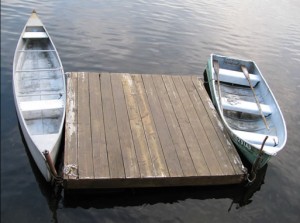Court Orders Marina to Tear Down Slips OR Don’t Build If You Don’t Have A Permit!
Comments are closed
Posted by John Simpson
One of the hardest parts in marina due diligence (appraisal, lending, acquisition) is determining if what you are buying is actually legal. Many would assume that if it exists, then it is legal. NOT SO!
I recently read this article in the Capital Online site, http://www.hometownannapolis.com/cgi-bin/readne/2008/08_25-16/TOP. I don’t know enough about the case to render an opinion. Obviously a Judge had one. I did a little searching and the public records show a huge number of permit violations for this marina. I’m sure the court ruling will be a milestone for marinas in the Chesapeake Bay region and we will follow this closely.
 Is this the first time I’ve seen this? It is more common that you think. Although we have been lucky with our subject properties, I have found sales that have sold with more slips than permitted. This is much easier to do with floating docks and often the slips are built a little at a time so no one will notice. Often buildings have no record of having obtained a building permit. This happens in all areas of real estate.
Is this the first time I’ve seen this? It is more common that you think. Although we have been lucky with our subject properties, I have found sales that have sold with more slips than permitted. This is much easier to do with floating docks and often the slips are built a little at a time so no one will notice. Often buildings have no record of having obtained a building permit. This happens in all areas of real estate.
Is this a good idea? It is not in anyway advantageous to an owner although it may seem that the time and money savings are worth it. It is never a good idea to buy a marina with legally questionable slips or improvements. Almost always you eventually get caught and then you end up with fines and removing the slips. The permitting process is very hard especially in the Chesapeake Bay Region. I have seen innocent mistakes because approvals have been obtained locally but not from all government agencies. An example of this is when a municipality provides a permit for docks and yet the U.S. Army Corps of Engineers, the Department of Environmental Protection, etc. was never notified – so to them, it’s illegal. It’s important to retain legal help with all permits and hopefully with someone familiar with not just county’s procedures but also the protocol with the state and other government bodies with jurisdiction over the water and its usage. Just look at the docket for the names of attorneys that keep on coming up. Those are who you call.
It is standard operating procedure for us to check permit and violations on the subject and the comparables. We are lucky that many counties now have online systems but more rural areas still have a manual process. It’s easy to call or stop by and get the history for construction at a project and compare it to what you see. If it does not match up it falls upon the owner to provide “proof of life.” Is is always possible that the records are incomplete, but most often building happened without approvals.
Is our process repeated by most appraisers and buyers? In my experience the answer is no. Most appraisers, consultants and buyers don’t check for violations, verify leases or determine if licenses are in place and valid. In today’s green-minded market, public sentiment is not on the marina owner’s side. In Maryland the laws became harder for building near the water and we are entering a phase where the improvement in place may be all you will ever be able to have. Current legal footprints are important because rebuilding up to to an existing footprint is much easier.
Overall this still can save big money for buyers and lenders and help protect against future lawsuits. We prefer to have a title search in hand before doing any marina valuation. This is because there are so many variables and more often than not, building permits are pulled by title searchers, speeding our due diligence process. It is an added safely net to any due diligence process.

